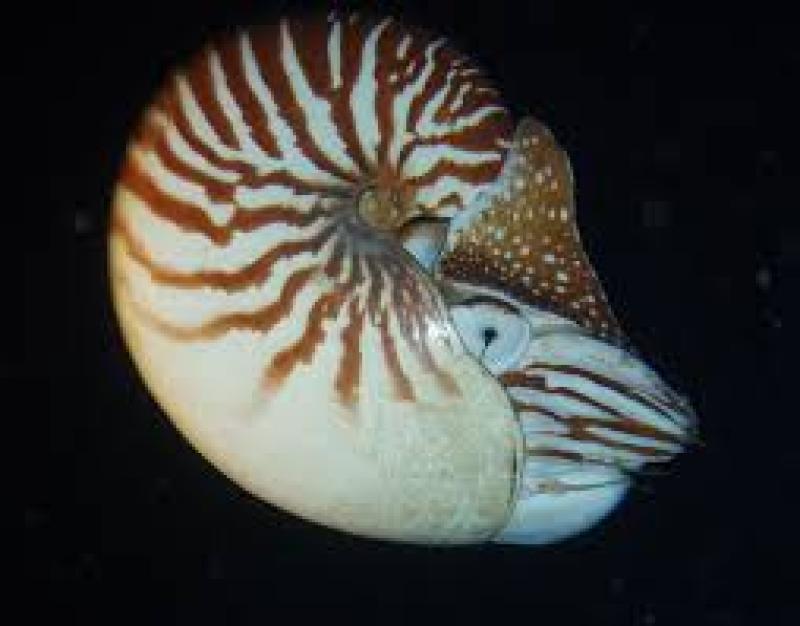An ancient swimming revolution in the oceans may have never happened


About 540 million years ago , the oceans were an alien landscape, devoid of swimming, or nektonic, creatures. Some scientists have hypothesized, based on fossil evidence, that swimmers suddenly dominated in the oceans during the Devonian Period, between 419 million and 359 million years ago. But an in-depth study of marine fossils now suggests that this so-called Devonian Nekton Revolution never actually took place.

The armored, jawed fish Dunkleosteus was a top ocean predator around 380 million to 360 million years ago, during the late Devonian Period.
AKKHARAT JARUSILAWONG/Shutterstock
Christopher Whalen and Derek Briggs, both paleontologists at Yale University, examined nearly 2,000 different genera of marine fossils dating to the Paleozoic Era, a vast span of geologic time between 540 million and 252 million years ago. Based on the creatures’ shapes, or morphologies, the researchers assessed whether the animals swam, and if they stayed close to the seafloor or ventured higher up in the water column.
The analysis showed no sudden burst of swimmers during the Devonian, the researchers contend July 18 in Proceedings of the Royal Society B. Instead, over time, “the water column was slowly filling with larger, more actively swimming animals,” Whalen says. “By the end of the Paleozoic, the oceans looked more like the oceans we know today.”
The Paleozoic got started with a bang with a burst of biodiversity famously known as the Cambrian explosion that brought into the world most of its modern major phyla, from arthropods to tardigrades. Some 40 million years later, the Great Ordovician Biodiversification Event added new branches to the tree of life, with cephalopods like nautiloids, a group that includes the modern chambered nautilus, and gastropods such as snails.
The Devonian Period was also an exciting time for life. It has been called both the age of fishes and the age of forests, as bony fishes and seed-dropping trees arose during this time. Paleontologist Christian Klug of the University of Zurich and colleagues suggested that the Devonian also saw a dramatic change in ecological behavior. Oceans that had been populated primarily with passively floating animals and seafloor life transformed into seas suddenly dominated by swimming creatures, as predators began to seek out food far from the competitive realm of the ocean floor, Klug’s team proposed in 2010 in Lethaia.
The idea intrigued Whalen. “It was an absolutely brilliant piece of work,” he says.
Whalen and Briggs wanted to further test the idea of a swimming revolution, but it’s impossible to know how fossil animals actually behaved. So the researchers first determined when and how abundantly different genera occurred in the fossil record. Then, the team classified how the animals moved based on their shapes — did they appear to be designed for fast swimming like bony fish, for parachuting like jellyfish or for jetting like squid?
This new analysis didn’t support the conclusions of the 2010 paper. That’s largely because of the different ways that Whalen and Briggs approached the data.
For example, for ammonoids — spiral-shaped marine mollusks that arose during the Devonian and remained abundant for millions of years — the researchers used a type of classification that assesses whether an ammonoid probably swam or floated based on the curled shape of its shell. So instead of considering all ammonoids to be swimmers as Klug’s team had, the new study determined that only some ammonoid genera swam. That reduced the number of swimmers that had been identified as arising in the Devonian. The analysis also added to the mix a group of swimming eellike animals called conodonts that became prevalent during the Cambrian Period and continued to inhabit the oceans throughout the rest of the Paleozoic.
This fuller picture of Paleozoic ocean life effectively smoothed out any apparent sudden increase in swimming behavior, Whalen says. Instead, the rise of active swimmers was gradual, starting in the Cambrian and spanning hundreds of millions of years.
That makes metabolic sense, Whalen adds. Swimming requires a lot of energy, and there was less dissolved oxygen, which is needed for metabolism, in the oceans during the early Devonian. Oxygen gradually increased in the oceans from the late Devonian through the end of the Paleozoic.
Klug says that he’s happy that his work has sparked this new analysis. “How they did it is quite rigorous,” he says. That doesn’t mean, however, that he’s convinced of the conclusion. It can be very difficult to assign different creatures to a particular swimming category based on morphology, he says. “This is interesting, but it involves a risk of overinterpreting the data,” he adds. “But, hopefully, it will stimulate discussion.”


How cool is it that scientists can learn how animals' behavior changed hundreds of millions of years ago?
Very intesting article.
You really have to think that these changes took place MILLIONS of years ago and yet our current scientists have been able to see and record these changes. Damn cool.